第100+14步 ChatGPT学习:R实现随机森林分类
基于R 4.2.2版本演示
一、写在前面
有不少大佬问做机器学习分类能不能用R语言,不想学Python咯。
答曰:可!用GPT或者Kimi转一下就得了呗。
加上最近也没啥内容写了,就帮各位搬运一下吧。
二、R代码实现随机森林分类
(1)导入数据
我习惯用RStudio自带的导入功能:


(2)建立随机森林模型(默认参数)
# Load necessary libraries
library(caret)
library(pROC)
library(ggplot2)# Assume 'data' is your dataframe containing the data
# Set seed to ensure reproducibility
set.seed(123)# Split data into training and validation sets (80% training, 20% validation)
trainIndex <- createDataPartition(data$X, p = 0.8, list = FALSE)
trainData <- data[trainIndex, ]
validData <- data[-trainIndex, ]# Convert the target variable to a factor for classification
trainData$X <- as.factor(trainData$X)
validData$X <- as.factor(validData$X)# Define control method for training with cross-validation
trainControl <- trainControl(method = "cv", number = 10)# Fit Random Forest model on the training set
model <- train(X ~ ., data = trainData, method = "rf", trControl = trainControl)# Print the best parameters found by the model
best_params <- model$bestTune
cat("The best parameters found are:\n")
print(best_params)
# Predict on the training and validation sets
trainPredict <- predict(model, trainData, type = "prob")[,2]
validPredict <- predict(model, validData, type = "prob")[,2]# Calculate ROC curves and AUC values
trainRoc <- roc(response = trainData$X, predictor = trainPredict)
validRoc <- roc(response = validData$X, predictor = validPredict)# Plot ROC curves with AUC values
ggplot(data = data.frame(fpr = trainRoc$specificities, tpr = trainRoc$sensitivities), aes(x = 1 - fpr, y = tpr)) +geom_line(color = "blue") +geom_area(alpha = 0.2, fill = "blue") +geom_abline(slope = 1, intercept = 0, linetype = "dashed", color = "black") +ggtitle("Training ROC Curve") +xlab("False Positive Rate") +ylab("True Positive Rate") +annotate("text", x = 0.5, y = 0.1, label = paste("Training AUC =", round(auc(trainRoc), 2)), hjust = 0.5, color = "blue")ggplot(data = data.frame(fpr = validRoc$specificities, tpr = validRoc$sensitivities), aes(x = 1 - fpr, y = tpr)) +geom_line(color = "red") +geom_area(alpha = 0.2, fill = "red") +geom_abline(slope = 1, intercept = 0, linetype = "dashed", color = "black") +ggtitle("Validation ROC Curve") +xlab("False Positive Rate") +ylab("True Positive Rate") +annotate("text", x = 0.5, y = 0.2, label = paste("Validation AUC =", round(auc(validRoc), 2)), hjust = 0.5, color = "red")# Calculate confusion matrices based on 0.5 cutoff for probability
confMatTrain <- table(trainData$X, trainPredict >= 0.5)
confMatValid <- table(validData$X, validPredict >= 0.5)# Function to plot confusion matrix using ggplot2
plot_confusion_matrix <- function(conf_mat, dataset_name) {conf_mat_df <- as.data.frame(as.table(conf_mat))colnames(conf_mat_df) <- c("Actual", "Predicted", "Freq")p <- ggplot(data = conf_mat_df, aes(x = Predicted, y = Actual, fill = Freq)) +geom_tile(color = "white") +geom_text(aes(label = Freq), vjust = 1.5, color = "black", size = 5) +scale_fill_gradient(low = "white", high = "steelblue") +labs(title = paste("Confusion Matrix -", dataset_name, "Set"), x = "Predicted Class", y = "Actual Class") +theme_minimal() +theme(axis.text.x = element_text(angle = 45, hjust = 1), plot.title = element_text(hjust = 0.5))print(p)
}# Now call the function to plot and display the confusion matrices
plot_confusion_matrix(confMatTrain, "Training")
plot_confusion_matrix(confMatValid, "Validation")# Extract values for calculations
a_train <- confMatTrain[1, 1]
b_train <- confMatTrain[1, 2]
c_train <- confMatTrain[2, 1]
d_train <- confMatTrain[2, 2]a_valid <- confMatValid[1, 1]
b_valid <- confMatValid[1, 2]
c_valid <- confMatValid[2, 1]
d_valid <- confMatValid[2, 2]# Training Set Metrics
acc_train <- (a_train + d_train) / sum(confMatTrain)
error_rate_train <- 1 - acc_train
sen_train <- d_train / (d_train + c_train)
sep_train <- a_train / (a_train + b_train)
precision_train <- d_train / (b_train + d_train)
F1_train <- (2 * precision_train * sen_train) / (precision_train + sen_train)
MCC_train <- (d_train * a_train - b_train * c_train) / sqrt((d_train + b_train) * (d_train + c_train) * (a_train + b_train) * (a_train + c_train))
auc_train <- roc(response = trainData$X, predictor = trainPredict)$auc# Validation Set Metrics
acc_valid <- (a_valid + d_valid) / sum(confMatValid)
error_rate_valid <- 1 - acc_valid
sen_valid <- d_valid / (d_valid + c_valid)
sep_valid <- a_valid / (a_valid + b_valid)
precision_valid <- d_valid / (b_valid + d_valid)
F1_valid <- (2 * precision_valid * sen_valid) / (precision_valid + sen_valid)
MCC_valid <- (d_valid * a_valid - b_valid * c_valid) / sqrt((d_valid + b_valid) * (d_valid + c_valid) * (a_valid + b_valid) * (a_valid + c_valid))
auc_valid <- roc(response = validData$X, predictor = validPredict)$auc# Print Metrics
cat("Training Metrics\n")
cat("Accuracy:", acc_train, "\n")
cat("Error Rate:", error_rate_train, "\n")
cat("Sensitivity:", sen_train, "\n")
cat("Specificity:", sep_train, "\n")
cat("Precision:", precision_train, "\n")
cat("F1 Score:", F1_train, "\n")
cat("MCC:", MCC_train, "\n")
cat("AUC:", auc_train, "\n\n")cat("Validation Metrics\n")
cat("Accuracy:", acc_valid, "\n")
cat("Error Rate:", error_rate_valid, "\n")
cat("Sensitivity:", sen_valid, "\n")
cat("Specificity:", sep_valid, "\n")
cat("Precision:", precision_valid, "\n")
cat("F1 Score:", F1_valid, "\n")
cat("MCC:", MCC_valid, "\n")
cat("AUC:", auc_valid, "\n")在R语言中,使用 caret 包训练随机森林模型时,最常见的可调参数是 mtry,但还有其他几个参数可以根据需要调整。这些参数通常是从 randomForest 包继承而来的,因为 caret 包的随机森林方法默认使用的是这个包(所以第一次要安装)。下面是一些可以调整的关键参数:
①mtry: 在每个分割中考虑的变量数量。默认情况下,对于分类问题,mtry 默认值是总变量数的平方根;对于回归问题,是总变量数的三分之一。
②ntree: 构建的树的数量。更多的树可以提高模型的稳定性和准确性,但会增加计算时间和内存使用。默认值通常是 500。
③nodesize: 每个叶节点最少包含的样本数。增加这个参数的值可以减少模型的过拟合,但可能会导致欠拟合。对于分类问题,默认值通常为 1,而回归问题则较大。
④maxnodes: 最大的节点数。这限制了树的最大大小,可以用来控制模型复杂度。
⑤importance: 是否计算变量重要性。这不会影响模型的预测能力,但会影响变量重要性分数的计算。
⑥replace: 是否进行有放回抽样。默认为 TRUE,意味着进行有放回的抽样。
⑦classwt: 类的权重,用于分类问题中的不平衡数据。
⑧cutoff: 分类问题中用于预测类别的概率阈值。这通常是一个类别数目的向量。
⑨sampsize: 用于每棵树的样本大小,如果使用有放回抽样(replace=TRUE),它决定了每个样本被抽样的次数。
结果输出(默认参数):





在默认参数中,caret包只会默默帮我们找几个合适的mtry值进行测试,其他默认值。
随机森林祖传的过拟合现象。
三、随机森林调参方法(4个值)
设置mtry值取值2、数据集列数的平方根、数据集列数的一半;ntree取值100、500和1000;nodesize取值1、5、10;maxnodes取值30、50、100:
# Load necessary libraries
library(caret)
library(pROC)
library(ggplot2)
library(randomForest) # Using randomForest for model fitting# Assume 'data' is your dataframe containing the data
# Set seed to ensure reproducibility
set.seed(123)# Split data into training and validation sets (80% training, 20% validation)
trainIndex <- createDataPartition(data$X, p = 0.8, list = FALSE)
trainData <- data[trainIndex, ]
validData <- data[-trainIndex, ]# Convert the target variable to a factor for classification
trainData$X <- as.factor(trainData$X)
validData$X <- as.factor(validData$X)# Define ranges for each parameter including mtry
mtry_range <- c(2, sqrt(ncol(trainData)), ncol(trainData)/2)
ntree_range <- c(100, 500, 1000)
nodesize_range <- c(1, 5, 10)
maxnodes_range <- c(30, 50, 100)# Initialize variables to store the best model, its AUC, and parameters
best_auc <- 0
best_model <- NULL
best_params <- NULL # Initialize best_params to store parameter values# Nested loops to try different combinations of parameters including mtry
for (mtry in mtry_range) {for (ntree in ntree_range) {for (nodesize in nodesize_range) {for (maxnodes in maxnodes_range) {# Train the Random Forest modelrf_model <- randomForest(X ~ ., data = trainData, mtry=mtry, ntree=ntree, nodesize=nodesize, maxnodes=maxnodes)# Predict on validation set using probabilities for ROCvalidProb <- predict(rf_model, newdata = validData, type = "prob")[,2]# Calculate AUCvalidRoc <- roc(validData$X, validProb)auc <- auc(validRoc)# Update the best model if the current model is betterif (auc > best_auc) {best_auc <- aucbest_model <- rf_modelbest_params <- list(mtry=mtry, ntree=ntree, nodesize=nodesize, maxnodes=maxnodes) # Store parameters of the best model}}}}
}# Check if a best model was found and output parameters
if (!is.null(best_params)) {cat("The best model parameters are:\n")print(best_params)
} else {cat("No model was found to exceed the baseline performance.\n")
}# Use best model for predictions
trainPredict <- predict(best_model, trainData, type = "prob")[,2]
validPredict <- predict(best_model, validData, type = "prob")[,2]# Rest of the analysis, including ROC curves and plotting
trainRoc <- roc(response = trainData$X, predictor = trainPredict)
validRoc <- roc(response = validData$X, predictor = validPredict)# Plotting code continues unchanged
ggplot(data = data.frame(fpr = trainRoc$specificities, tpr = trainRoc$sensitivities), aes(x = 1 - fpr, y = tpr)) +geom_line(color = "blue") +geom_area(alpha = 0.2, fill = "blue") +geom_abline(slope = 1, intercept = 0, linetype = "dashed", color = "black") +ggtitle("Training ROC Curve") +xlab("False Positive Rate") +ylab("True Positive Rate") +annotate("text", x = 0.5, y = 0.1, label = paste("Training AUC =", round(auc(trainRoc), 2)), hjust = 0.5, color = "blue")ggplot(data = data.frame(fpr = validRoc$specificities, tpr = validRoc$sensitivities), aes(x = 1 - fpr, y = tpr)) +geom_line(color = "red") +geom_area(alpha = 0.2, fill = "red") +geom_abline(slope = 1, intercept = 0, linetype = "dashed", color = "black") +ggtitle("Validation ROC Curve") +xlab("False Positive Rate") +ylab("True Positive Rate") +annotate("text", x = 0.5, y = 0.2, label = paste("Validation AUC =", round(auc(validRoc), 2)), hjust = 0.5, color = "red")confMatTrain <- table(trainData$X, trainPredict >= 0.5)
confMatValid <- table(validData$X, validPredict >= 0.5)# Function to plot confusion matrix using ggplot2
plot_confusion_matrix <- function(conf_mat, dataset_name) {conf_mat_df <- as.data.frame(as.table(conf_mat))colnames(conf_mat_df) <- c("Actual", "Predicted", "Freq")p <- ggplot(data = conf_mat_df, aes(x = Predicted, y = Actual, fill = Freq)) +geom_tile(color = "white") +geom_text(aes(label = Freq), vjust = 1.5, color = "black", size = 5) +scale_fill_gradient(low = "white", high = "steelblue") +labs(title = paste("Confusion Matrix -", dataset_name, "Set"), x = "Predicted Class", y = "Actual Class") +theme_minimal() +theme(axis.text.x = element_text(angle = 45, hjust = 1), plot.title = element_text(hjust = 0.5))print(p)
}# Function to plot confusion matrix and further analysis remains the same...
plot_confusion_matrix(confMatTrain, "Training")
plot_confusion_matrix(confMatValid, "Validation")# Extract values for calculations
a_train <- confMatTrain[1, 1]
b_train <- confMatTrain[1, 2]
c_train <- confMatTrain[2, 1]
d_train <- confMatTrain[2, 2]a_valid <- confMatValid[1, 1]
b_valid <- confMatValid[1, 2]
c_valid <- confMatValid[2, 1]
d_valid <- confMatValid[2, 2]# Training Set Metrics
acc_train <- (a_train + d_train) / sum(confMatTrain)
error_rate_train <- 1 - acc_train
sen_train <- d_train / (d_train + c_train)
sep_train <- a_train / (a_train + b_train)
precision_train <- d_train / (b_train + d_train)
F1_train <- (2 * precision_train * sen_train) / (precision_train + sen_train)
MCC_train <- (d_train * a_train - b_train * c_train) / sqrt((d_train + b_train) * (d_train + c_train) * (a_train + b_train) * (a_train + c_train))
auc_train <- roc(response = trainData$X, predictor = trainPredict)$auc# Validation Set Metrics
acc_valid <- (a_valid + d_valid) / sum(confMatValid)
error_rate_valid <- 1 - acc_valid
sen_valid <- d_valid / (d_valid + c_valid)
sep_valid <- a_valid / (a_valid + b_valid)
precision_valid <- d_valid / (b_valid + d_valid)
F1_valid <- (2 * precision_valid * sen_valid) / (precision_valid + sen_valid)
MCC_valid <- (d_valid * a_valid - b_valid * c_valid) / sqrt((d_valid + b_valid) * (d_valid + c_valid) * (a_valid + b_valid) * (a_valid + c_valid))
auc_valid <- roc(response = validData$X, predictor = validPredict)$auc# Print Metrics
cat("Training Metrics\n")
cat("Accuracy:", acc_train, "\n")
cat("Error Rate:", error_rate_train, "\n")
cat("Sensitivity:", sen_train, "\n")
cat("Specificity:", sep_train, "\n")
cat("Precision:", precision_train, "\n")
cat("F1 Score:", F1_train, "\n")
cat("MCC:", MCC_train, "\n")
cat("AUC:", auc_train, "\n\n")cat("Validation Metrics\n")
cat("Accuracy:", acc_valid, "\n")
cat("Error Rate:", error_rate_valid, "\n")
cat("Sensitivity:", sen_valid, "\n")
cat("Specificity:", sep_valid, "\n")
cat("Precision:", precision_valid, "\n")
cat("F1 Score:", F1_valid, "\n")
cat("MCC:", MCC_valid, "\n")
cat("AUC:", auc_valid, "\n")结果输出:

以上是找到的相对最优参数组合,看看具体性能:



还不错,至少过拟合调下来了。
五、最后
数据嘛:
链接:https://pan.baidu.com/s/1rEf6JZyzA1ia5exoq5OF7g?pwd=x8xm
提取码:x8xm
相关文章:

第100+14步 ChatGPT学习:R实现随机森林分类
基于R 4.2.2版本演示 一、写在前面 有不少大佬问做机器学习分类能不能用R语言,不想学Python咯。 答曰:可!用GPT或者Kimi转一下就得了呗。 加上最近也没啥内容写了,就帮各位搬运一下吧。 二、R代码实现随机森林分类 ÿ…...

C#面 :ASP.Net Core中有哪些异常处理的方案?
在 ASP.NET Core中,有多种异常处理方案可供选择。以下是其中几种常见的异常处理方案: 中间件异常处理: ASP.NET Core提供了一个中间件来处理全局异常。通过在Startup类的Configure方法中添加UseExceptionHandler中间件,可以捕获…...
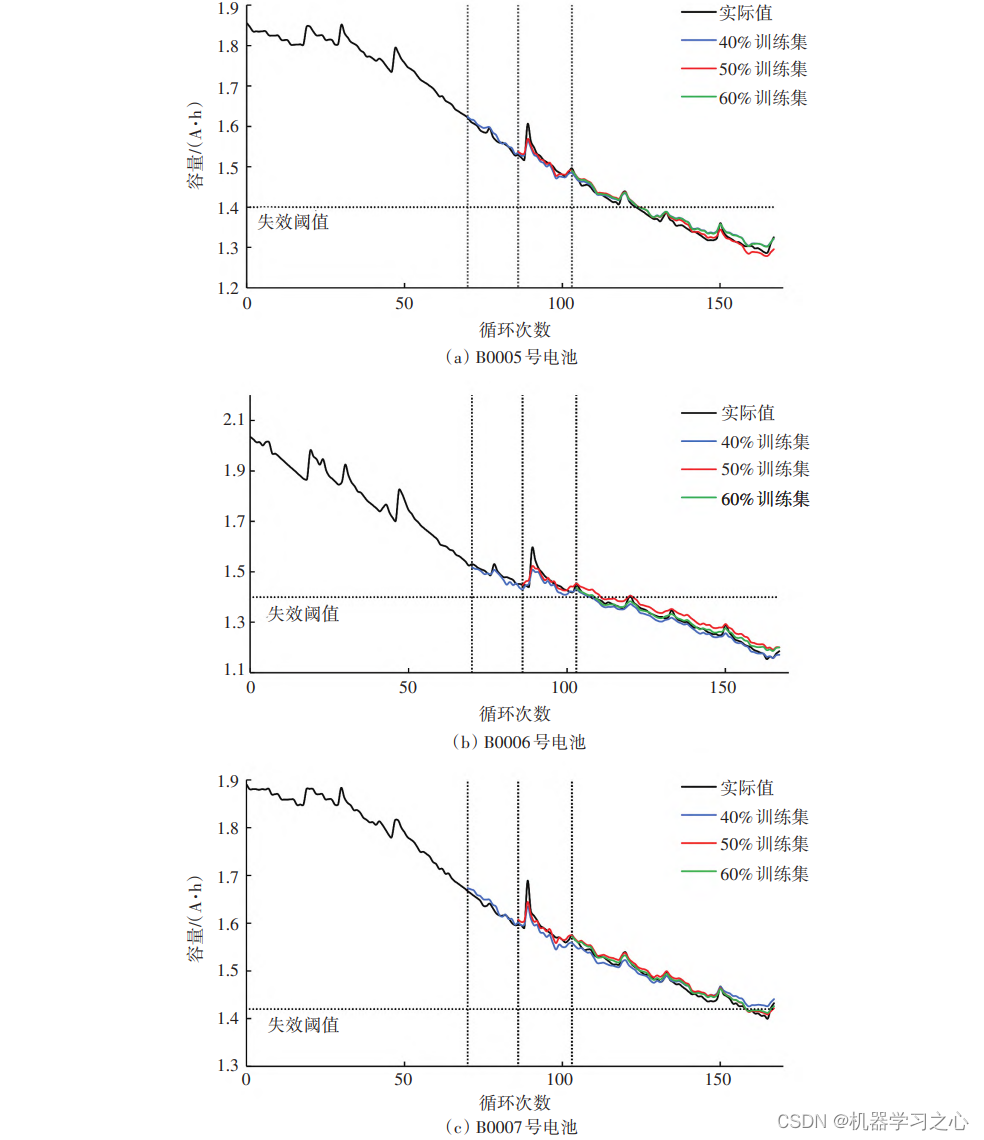
论文辅导 | 基于多尺度分解的LSTM⁃ARIMA锂电池寿命预测
辅导文章 模型描述 锂电池剩余使用寿命(Remaining useful life,RUL)预测是锂电池研究的一个重要方向,通过对RUL的准确预测,可以更好地管理和维护电池,延长电池使用寿命。为了能够准确预测锂电池的RUL&…...

开关阀(4):对于客户技术要求信息的识别
1.阀门部分 2.执行器 行程时间的一般标准 The stroking times are applicable to throttling control valves and should not exceed 2 seconds/inch of valve diameter 3.附件 4.定位器...

Python统计实战:时间序列分析之二阶曲线预测和三阶曲线预测
为了解决特定问题而进行的学习是提高效率的最佳途径。这种方法能够使我们专注于最相关的知识和技能,从而更快地掌握解决问题所需的能力。 (以下练习题来源于《统计学—基于Python》。请在Q群455547227下载原始数据。) 练习题 下表是某只股票…...

Drools开源业务规则引擎(三)- 事件模型(Event Model)
文章目录 Drools开源业务规则引擎(三)- 事件模型(Event Model)1.org.kie.api.event2.RuleRuntimeEventManager3.RuleRuntimeEventListener接口说明示例规则文件规则执行日志输出 4.AgentaEventListener接口说明示例监听器实现类My…...

智慧校园行政办公升级,日程监控不可或缺
在智慧校园的行政办公场景下,日程监控功能扮演了一个核心协调者的角色,它细腻地编织起时间管理的网络,确保各项活动与任务在井然有序中高效推进。这一功能通过以下几个方面,展现了其在提升工作效率与团队协作方面的独特价值。 首先…...

RedHat运维-Linux SSH基础3-sshd守护进程
1. sshd这个守护进程提供了OpenSSH服务,请问可以通过编辑哪些配置文件,来配置这个服务呢?________________________ 2. sshd这个守护进程提供了OpenSSH服务,请问可以通过编辑哪些配置文件,来配置这个服务呢?…...

医院产科信息化管理系统源码,智慧产科管理系统,涵盖了从孕妇到医院初次建档、历次产检、住院分娩、统计上报到产后42天全部医院服务的信息化管理。
医院产科信息化管理系统源码,智慧产科管理系统,产科专科电子病历系统 技术架构:前后端分离Java,Vue,ElementUIMySQL8.0.36 医院产科信息化管理系统,通过构建专科病例系统实现临床保健一体化,涵…...

Softmax作为分类任务中神经网络输出层的优劣分析
Softmax作为分类任务中神经网络输出层的优劣分析 在深度学习领域,Softmax函数作为分类任务中神经网络的输出层,被广泛应用并展现出强大的优势。然而,任何技术都有其两面性,Softmax函数也不例外。本文将从多个角度深入分析Softmax…...
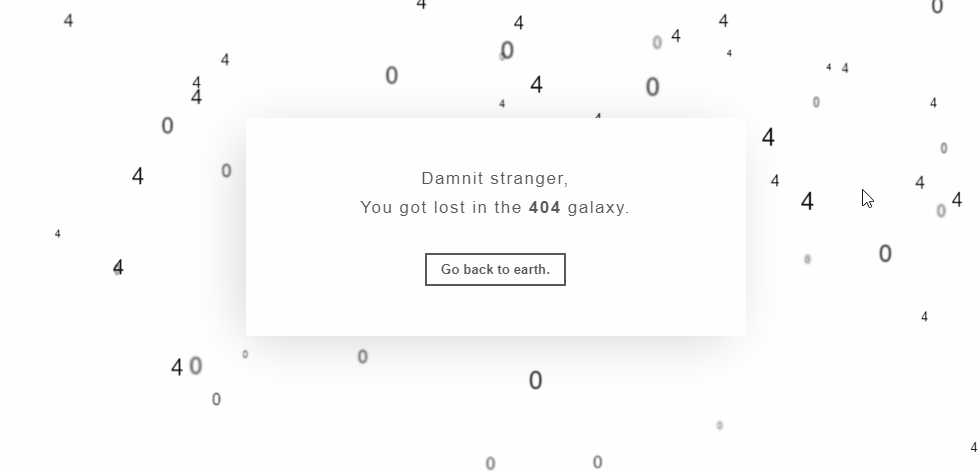
404白色唯美动态页面源码
404白色唯美动态页面源码,源码由HTMLCSSJS组成,记事本打开源码文件可以进行内容文字之类的修改,双击html文件可以本地运行效果,也可以上传到服务器里面,重定向这个界面 404白色唯美动态页面源码...

细说MCU的ADC模块单通道连续采样的实现方法
目录 一、工程依赖的硬件及背景 二、设计目的 三、建立工程 1、配置GPIO 2、选择时钟源和Debug 3、配置ADC 4、配置系统时钟和ADC时钟 5、配置TIM3 6、配置串口 四、代码修改 1、重定义TIM3中断回调函数 2、启动ADC及重写其回调函数 3、定义用于存储转换结果的数…...

H2 Database Console未授权访问漏洞封堵
背景 H2 Database Console未授权访问,默认情况下自动创建不存在的数据库,从而导致未授权访问。各种未授权访问的教程,但是它怎么封堵呢? -ifExists 很简单,启动参数添加 -ifExists ,它的含义:…...
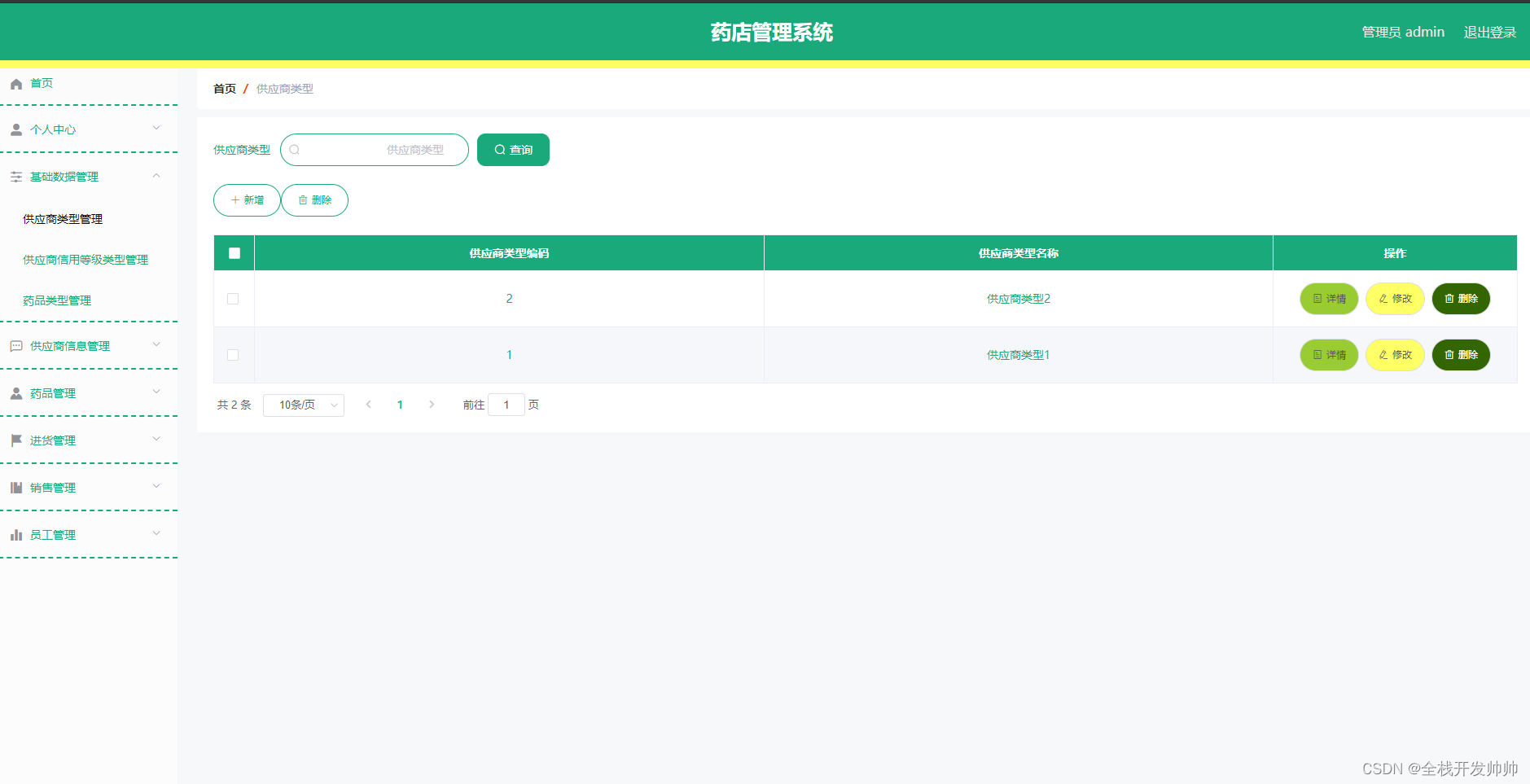
基于java+springboot+vue实现的药店管理系统(文末源码+Lw)285
摘 要 传统信息的管理大部分依赖于管理人员的手工登记与管理,然而,随着近些年信息技术的迅猛发展,让许多比较老套的信息管理模式进行了更新迭代,药品信息因为其管理内容繁杂,管理数量繁多导致手工进行处理不能满足广…...

网络爬虫基础
网络爬虫基础 网络爬虫,也被称为网络蜘蛛或爬虫,是一种用于自动浏览互联网并从网页中提取信息的软件程序。它们能够访问网站,解析页面内容,并收集所需数据。Python语言因其简洁的语法和强大的库支持,成为实现网络爬虫…...

js数组方法归纳——push、pop、unshift、shift
以下涉及到的数组的四个基础方法均会改变原数组!!! 1、 push() 该方法可以向数组的末尾添加一个或多个元素,并返回数组的新的长度可以将要添加的元素作为方法的参数传递,这样这些元素将会自动添加到数组的末尾该方法会将数组新的长度作为返回值返回 //创…...

VPN是什么?
VPN,全称Virtual Private Network,即“虚拟私人网络”,是一种在公共网络(如互联网)上建立加密、安全的连接通道的技术。简单来说,VPN就像是一条在公共道路上铺设的“秘密隧道”,通过这条隧道传输…...

浅析DDoS高防数据中心网络
随着企业业务的持续拓展和数智化转型步伐的加快,数据中心已逐渐演变为企业数据存储、处理和应用的关键部署场地,这也使得数据中心面临着日益严峻的网络安全风险,其中DDoS攻击以其高效性依旧是数据中心面临的主要威胁之一。伴随着数智化的发展…...

《安全行业大模型技术应用态势发展报告(2024)》
人工智能技术快速迭代发展,大模型应用场景不断拓展,随着安全行业对人工智能技术的应用程度日益加深,大模型在网络安全领域的应用潜力和挑战逐渐显现。安全行业大模型技术的应用实践不断涌现,其在威胁检测、风险评估和安全运营等方…...
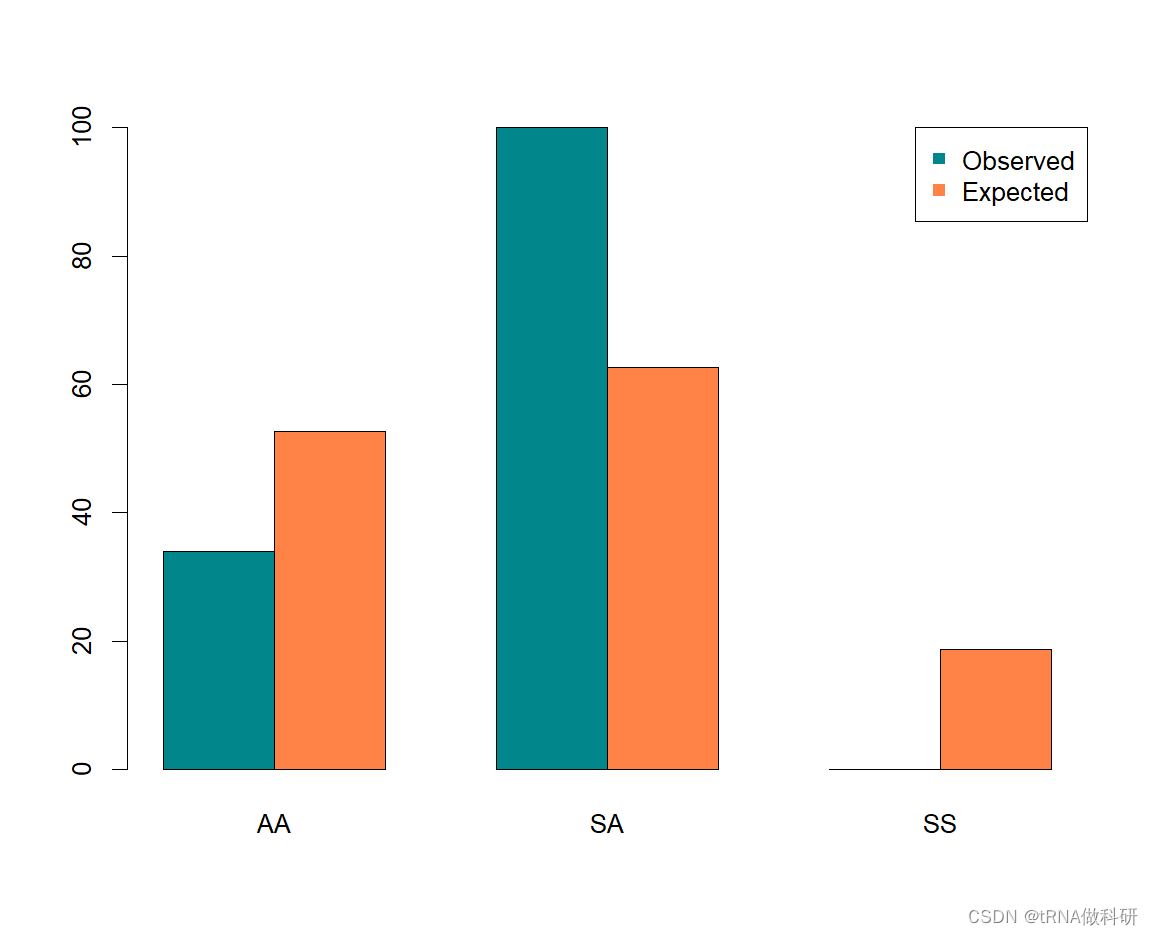
【基于R语言群体遗传学】-4-统计建模与算法(statistical tests and algorithm)
之前的三篇博客,我们对于哈代温伯格遗传比例有了一个全面的认识,没有看的朋友可以先看一下前面的博客: 群体遗传学_tRNA做科研的博客-CSDN博客 1.一些新名词 (1)Algorithm: A series of operations executed in a s…...
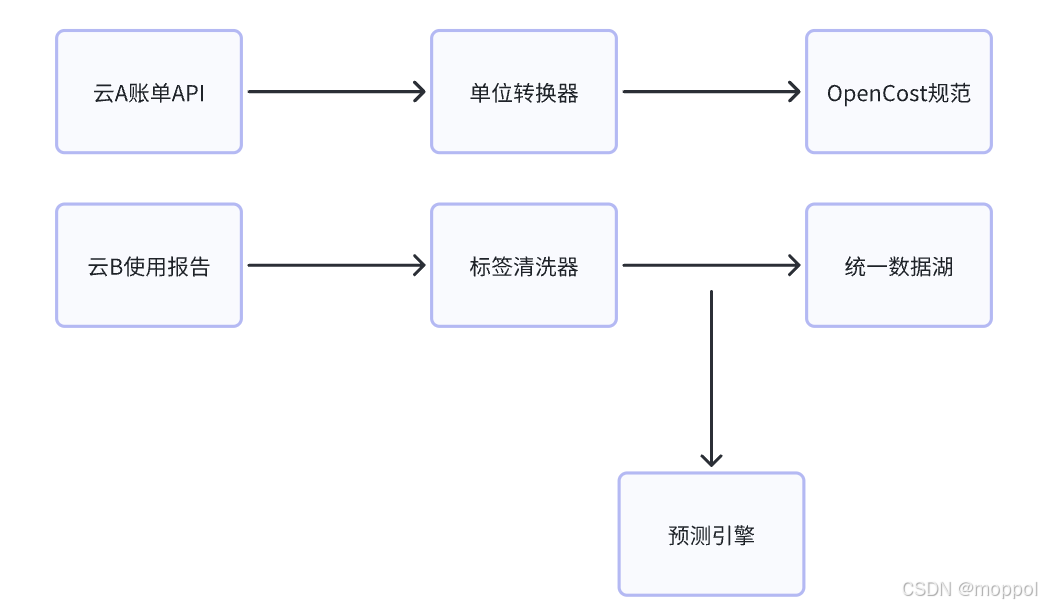
多云管理“拦路虎”:深入解析网络互联、身份同步与成本可视化的技术复杂度
一、引言:多云环境的技术复杂性本质 企业采用多云策略已从技术选型升维至生存刚需。当业务系统分散部署在多个云平台时,基础设施的技术债呈现指数级积累。网络连接、身份认证、成本管理这三大核心挑战相互嵌套:跨云网络构建数据…...

【Zephyr 系列 10】实战项目:打造一个蓝牙传感器终端 + 网关系统(完整架构与全栈实现)
🧠关键词:Zephyr、BLE、终端、网关、广播、连接、传感器、数据采集、低功耗、系统集成 📌目标读者:希望基于 Zephyr 构建 BLE 系统架构、实现终端与网关协作、具备产品交付能力的开发者 📊篇幅字数:约 5200 字 ✨ 项目总览 在物联网实际项目中,**“终端 + 网关”**是…...

今日学习:Spring线程池|并发修改异常|链路丢失|登录续期|VIP过期策略|数值类缓存
文章目录 优雅版线程池ThreadPoolTaskExecutor和ThreadPoolTaskExecutor的装饰器并发修改异常并发修改异常简介实现机制设计原因及意义 使用线程池造成的链路丢失问题线程池导致的链路丢失问题发生原因 常见解决方法更好的解决方法设计精妙之处 登录续期登录续期常见实现方式特…...

ip子接口配置及删除
配置永久生效的子接口,2个IP 都可以登录你这一台服务器。重启不失效。 永久的 [应用] vi /etc/sysconfig/network-scripts/ifcfg-eth0修改文件内内容 TYPE"Ethernet" BOOTPROTO"none" NAME"eth0" DEVICE"eth0" ONBOOT&q…...
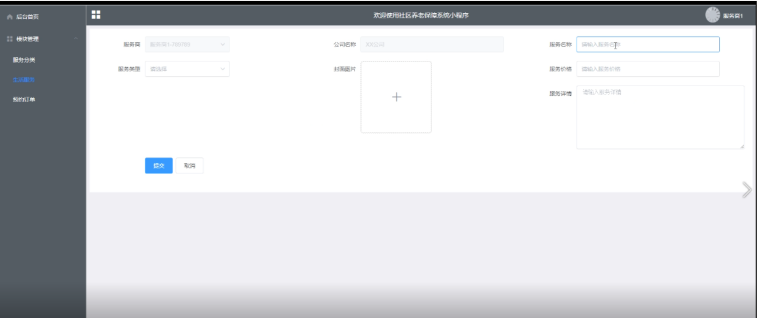
Springboot社区养老保险系统小程序
一、前言 随着我国经济迅速发展,人们对手机的需求越来越大,各种手机软件也都在被广泛应用,但是对于手机进行数据信息管理,对于手机的各种软件也是备受用户的喜爱,社区养老保险系统小程序被用户普遍使用,为方…...

sipsak:SIP瑞士军刀!全参数详细教程!Kali Linux教程!
简介 sipsak 是一个面向会话初始协议 (SIP) 应用程序开发人员和管理员的小型命令行工具。它可以用于对 SIP 应用程序和设备进行一些简单的测试。 sipsak 是一款 SIP 压力和诊断实用程序。它通过 sip-uri 向服务器发送 SIP 请求,并检查收到的响应。它以以下模式之一…...

回溯算法学习
一、电话号码的字母组合 import java.util.ArrayList; import java.util.List;import javax.management.loading.PrivateClassLoader;public class letterCombinations {private static final String[] KEYPAD {"", //0"", //1"abc", //2"…...
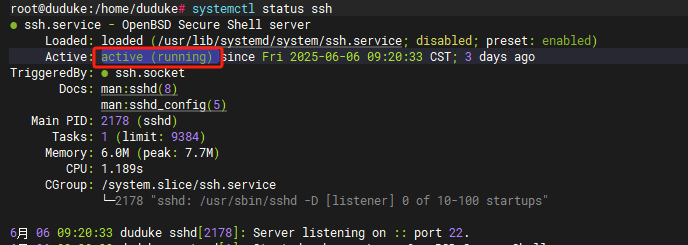
VM虚拟机网络配置(ubuntu24桥接模式):配置静态IP
编辑-虚拟网络编辑器-更改设置 选择桥接模式,然后找到相应的网卡(可以查看自己本机的网络连接) windows连接的网络点击查看属性 编辑虚拟机设置更改网络配置,选择刚才配置的桥接模式 静态ip设置: 我用的ubuntu24桌…...
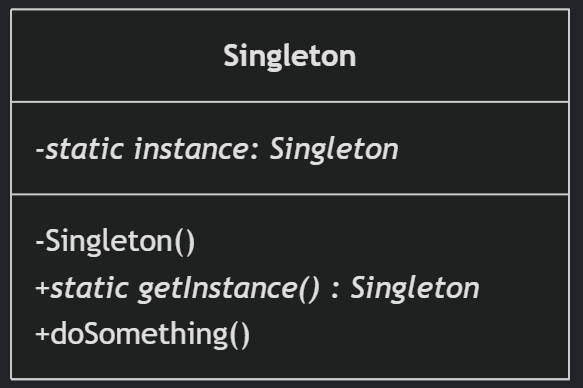
(一)单例模式
一、前言 单例模式属于六大创建型模式,即在软件设计过程中,主要关注创建对象的结果,并不关心创建对象的过程及细节。创建型设计模式将类对象的实例化过程进行抽象化接口设计,从而隐藏了类对象的实例是如何被创建的,封装了软件系统使用的具体对象类型。 六大创建型模式包括…...

根目录0xa0属性对应的Ntfs!_SCB中的FileObject是什么时候被建立的----NTFS源代码分析--重要
根目录0xa0属性对应的Ntfs!_SCB中的FileObject是什么时候被建立的 第一部分: 0: kd> g Breakpoint 9 hit Ntfs!ReadIndexBuffer: f7173886 55 push ebp 0: kd> kc # 00 Ntfs!ReadIndexBuffer 01 Ntfs!FindFirstIndexEntry 02 Ntfs!NtfsUpda…...
